Premium Only Content
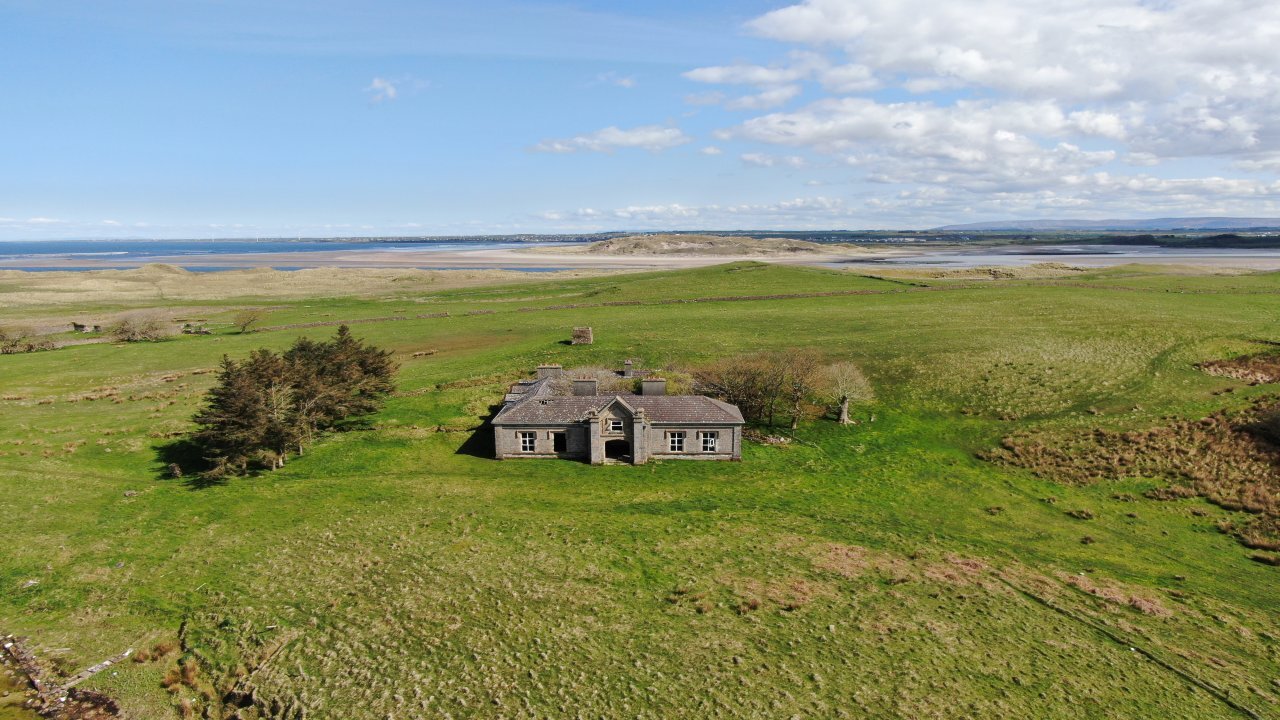
Irish drone captures historic abandoned home on desolate island
The only house on Bartragh Island (also known as Bartra Island) near Killala, Co. Mayo is a distant and isolated place, sitting in the Moy estuary, inaccessible most of the time except by boat. The question must be asked is why did Charles Kirkwood choose to build a house in such a location in the early nineteenth century? Access to the house, even in the twenty-first century, is still controlled by the tides and there are many tales of people being stuck on the island having misjudged the returning waters.
Today the house, which is a perfect setting for an Agatha Christie novel, lies derelict having been the focus of a number of failed ambitions to restore it. Also it now appears from my research that the man who instigated the construction of the house on Bartragh Island in the 1830's, Charles Kirkwood, spent the last decade of his life in an asylum. Is Bartragh Island a harsh environment that takes its toll on all those who dare to make it their home?
The earliest mention of an association between the Kirkwood family and Bartragh Island is when Miss Dorothy Kirkwood held a lease dated 1741 for lands at Moyne from Lord Tyrawley for a term of 999 years at a rent of £22 a year. However it appears that this lease was at some stage abandoned, for in 1827 the estate of Lord Tyrawley was sold by the Court of Chancery to a Thomas Jones, who again leased the lands to the Kirkwood’s in 1831 for 910 years at a rent of £21 5s 10d. The person who is responsible for the construction of the house on Bartragh Island is Captain Charles Kirkwood who was a midshipman on the gunboat ‘Fame’ and fought with Nelson at the battle of Trafalgar. Following his retirement from the Navy, Captain Kirkwood began a new career when he purchased a vessel and traded between England and India. As a result of this enterprise he became very wealthy and bought the townlands of Moyne, Bartragh, Kilcummin and Townparks West. His new home would be the only house ever built on the 350 acre island in the Moy estuary which is surrounded by other smaller islands known by names such as Calf and Horse Island.
The single-storey house with half dormer attic wing to the rear was in use in 1838 and it appears that whoever designed the house certainly took heed to make it suitable for its environment. The house is nestled into a hill with a large land bank in front that protects it from the full force of the sea during a storm. The house is entered through a large entrance porch from which you enter through an off centre door to an inner hall that runs perpendicular. This hallway traverses the length of the main entrance front block and provides access to two large reception rooms with high ceilings. Accommodated in the entrance porch but accessed from the inner hall is a curved staircase that leads to the upper floor. The stairs is entered from the inner hall through a Gothic arch with plaster detailing that gives some impression of how the house was decorated when it was originally built. The house is U shaped and is built around a central court yard, the wing that extends from the rear of the main block is half dormered and appears to have once been bedrooms on both the ground and first floor. A long corridor on the ground floor provided access to these bedrooms on the courtyard side. This in turn led to a secondary or servant’s staircase which was located adjacent to the kitchen wing. At the time of the census in the early 1900’s it is recorded that the house comprised of 17 rooms.
In April 1837, it was reported that three men were charged with breaking windows and ‘Gothic’ sashes of the house of Charles Kirkwood on Bartragh Island. The motive given for the vandalism by these men was that Kirkwood was selling mutton in Killala under market price. The vandals tore away the ‘Plaster of Paris ornaments’ off the lower part of the house and flung the pieces at the windows in order to break them. They broke 156 panes of glass, damaged railings and pulled up the newly planted shrubbery. At the time of the attack on the house on Bartragh Island, the Kirkwoods were living in a house in nearby Killala town. The reasons giving as to why the house on the island was unoccupied was due to it being winter and the building was ‘new’. Charles Kirkwood married a Miss Henrietta Knox in December 1838 and this may have been his reason for building the house on Bartragh Island. In September 1840, a son and heir was born at Bartragh House to Charles Kirkwood and his wife and by the end of the decade they would have five more children. Charles was a lieutenant in the Navy and since his retirement had resided in Mayo. Life on the island was obviously harsh which was illustrated in 1843 when a boat with six men were fishing for herring near Bartragh . A storm broke out and they were driven on to the shore of the island where four of the men successfully made their way to the home of Captain Kirkwood. Servants were sent in search of the two missing men who were found on the shore. They were ferried back to Bartragh House where one man was revived, however the other was not so fortunate.
It is often speculated that Captain Kirkwood would have had to have been mad to build a house on an island, however the events of 1849 show that this assertion may have had foundation. A commission had been set up at this time to enquire into the state of mind of Charles Kirkwood to confirm if he was a lunatic. A Mr. Martley, Q.C. and Mr. Wall, Q.C. appeared on behalf of Charles 's wife, Mrs. Kirkwood, to ascertain if her husband had become insane. The purpose of the commission was also to find out if Charles could manage his own substantial financial affairs and land holdings. It was determined that Charles had become insane around the 15th of April of that year and that he had always had an excitable temperament particularly in recent years as a result of an addiction to alcohol. He was having hallucinations and made claims that he had made recent voyages to China which had never occurred. He was also talking to himself and when questioned he said he was speaking to people who had been dead for a number of years who had begun to visit him. The children’s governess, Miss Pike, appeared as a witness and she attested that Charles was drinking heavily and that he was delusional as he told her about conversations he was having with his dead father. Kirkwood was comfortable in terms of his finances, his settled real estate brought £320 a year, his chattel property was £540 and his railway shares amounted to £10,133. Mr. Kirkwood ascertained that he was of sound mind and the ‘doctors’ were only wasting the court's time. The jury returned a verdict that he was of unsound mind and in order to avoid publicity he was placed in an asylum in Finglas, Dublin however it was feared that there was ‘ no ultimate prospect of his recovery’. At this time Charles was aged 61 and it appears that he spent the rest of his life in the Dublin Asylum. In the record of his will, it states that he died on the 23rd April 1859 in Finglas Dublin which obviously indicates that he was still ensconced in the asylum at the time of his death. The executors of his will were Joseph Kirkwood of Killala and Henry William Knox of Netley, Ballina.
After his death in 1861, Charles Kirkwood was succeeded by his son Captain Charles Knox Kirkwood who had been a Lieutenant in the Royal Horse Artillery and who was stationed in Gibraltar for four years prior to his father’s death. He had become Captain upon his retirement and returned to Ireland to take up his inheritance and married Emma Louisa Knox of Rappa Castle, who considering his mother’s lineage possibly meant that they were related. In September 1864, Charles Knox Kirkwood, late of the Royal Artillery and eldest son of Captain Charles Kirkwood, married the third daughter of Annesley Knox of Rappa Castle. The marriage took place at the nearby, but now derelict, Ballysakeery Church. Charles had his brother John as best man and the bride was given away by her brother, Annesley Arthur Knox ( my own great-great grandfather). After the ceremony the whole group left for further celebrations at Rappa Castle located near Ardagh in Crossmolina. The marriage was not to be a long one as Emma Louisa died in 1877 and is buried near her former home.
t appears through the generations that the Kirkwood family always had a number of members with military involvement. Charles Kirkwood’s brother, John, had joined the Kings Shropshire Light Infantry after his return from duty in the suppression of the Indian Mutiny between 1857 and 1859. He was appointed an Ensign in 1863 followed by Lieutenant in 1865, becoming a Captain in 1873 and a Major in 1883. He retired with the rank of Lieutenant Colonel in February 1886. He was involved in campaigns in Egypt in 1882 and the Sudan in 1885. After his retirement in 1886 he spent a lot of time in Glencar near Killorglin in Co. Kerry in a former hunting lodge on the Marquis of Lansdowne 's estate. Colonel Kirkwood died at a nursing home in Dublin in May 1917.
In 1893, tragedy struck the Island when the death took place of Gerald John Kirkwood, at the residence of his father on Bartragh Island. He was the third and youngest son of Captain K. Kirkwood and his interment took place in the family burial ground near Rappa Castle which would have been his mother’s ancestral home. At the time of the census in 1901, Charles K. Kirkwood, aged 60 is in residence in Bartragh House on the island with his son Annesley Charles aged 33, daughters Mabel Emma aged 31 and Laura Maud aged 29, also in residence are their two male servants. By 1911, Charles is living in the house with only one daughter Laura Maud together with two servants. His other daughter Mabel Emma had died in March 1910 and is buried in Mullafarry Churchyard near Killala. The house at this time is described as having 17 rooms and 20 out buildings. Over the years many local people have often visited the island and in 1912, members of the branch of Ballina’s Tailors society had their annual excursion to Bartragh Island where they were entertained by Captain Kirkwood. Captain Charles Knox Kirkwood died on Bartragh in 1926 and was buried on the island. His head stone can still be seen on the hill to the rear of the house, his burial ground overlooks a spectacular vista of Enniscrone, Co. Sligo. The headstone marking his last resting place was erected by his daughter Maud and it is said locally that it doesn’t actually mark his final resting place which is located further up the hill. The story goes that when the men charged with erecting the headstone were transporting it up the hill, it fell off the vehicle they were using. So much effort was involved with putting it back on the cart or trailer that it was installed where it landed. Now whether this story is true we shall never know but it is a funny anecdote. Charles's son, Claud Arthur Kirkwood inherited the house and island, he had been born in 1871 together with his twin sister Maud. Claud had worked for the Bank of Ireland until 1904 but then became an evangelical preacher who traveled to the USA and Canada. In July 1927, the household furniture and effects of the late Captain Kirkwood were advertised for sale by his son C.C. Kirkwood (Claud). The house at the time was listed as having a drawing room, hall, dining room, gun room with workshop, several bedrooms and a kitchen. Potential purchasers were warned in the advertisement that the sale started at 2 o’clock and that they must leave the island before the return of the tide.
In November 1927 during a fierce storm a ship named the S.S. Sine, which was anchored in Killala Bay, was torn free from her moorings and was driven by the wind on to Bartragh Island. The lives of the crew were saved by two civic guards and a number of men from nearby Killala town. The vessel, which was chartered from Denmark by Isaac Beckett to carry a cargo of timber from Sweden to his building providers that he operated in Ballina. A number of men seen the ship's distress rockets and headed out in a 14 foot boat from Killala pier in the raging storm. They reached the beached ship and began to rescue the crew by means of attaching a cable to the ship's side and using a basket or small metal cage to remove the crew of the stricken vessel, one by one. In the weeks that followed the dramatic rescue, the cargo was eventually salvaged but the wreck of the ship remained. Today timbers can be seen protruding from the sand around the island which are all that remain of the SS Sine. A fitting conclusion occurred in 1995, when the 80 year old Gunnar B. Lindberg, a member of the crew of the Sine returned to see what remained of the wreck from which he was rescued in November 1927. He owed his life to those local men who risked their own lives rescuing him nearly 70 years previous.
Claud Kirkwood lived a solitary life on the island, preferring his own company and never married, as a result he was once referred to in a newspaper article as 'the loneliest man in the world'. However it appears that he preferred it that way and became infuriated with unwanted visitors. In 1941, Claud Kirkwood placed an advertisement in the local paper saying that the island was closed to visitors ‘Due to the thieving proclivities of certain individuals, Bartragh Island is now closed from this date, except with the written permission of Claude A. Kirkwood'. Just after the Second World War, Claud sold Bartragh to a man named Captain Verner. Kirkwood moved to Dublin where he died in 1953 and is buried in Deans Grange in Dublin. In 1947, it was reported that a CIE lorry was damaged while delivering turf to Bartragh Island for Captain and Mrs. Mac Kenzie-Verner who had purchased the island. The lorry had become stuck in the sand having previously delivered all the new owners furniture to the island. Captain Verner’s wife was a sister of the actress Joyce Redman who eventually purchased the house and visited it regularly. In 1952, the owner of the island was Captain Charles Wynne-Roberts, the husband of Joyce Redman, who was a director of Calor Gas and a son of the founders and directors of General Electric. Joyce Redman was the daughter of Major and Mrs. Redman, and was a niece of Niall Mc Cormick of Carramore Lacken. The house at this time was used as a summer residence, where they entertained friends and it is said that the Gone with the Wind actress Vivien Leigh attempted a visit but the weather did not permit. During the tenure of Joyce Redman the house now had its own power plant with both hot and cold running water. Their caretaker on the island at this time was an Armagh born man, named Tom Duff, who only left the island once a week to go to mass in nearby Cooneal Church. A major concern of the owners of the island at this time were the rates which were inordinately expensive. The rates were leveled against Bartragh Island and three of its satellite islands which the owners described as ‘Simply fabulous’, one wonders if they were talking about the rates or the islands. While the occupiers of the island may have lacked human company, animal life abounded, they had a cow, calf, eight sheep, a donkey with foal and fifty chickens. This did not include over two thousand rabbits who were making a nuisance of themselves in terms of the efforts to cultivate a garden around the house. One link with the outside world was the post which was delivered to the Carroll cottage on the main land three times a week.
In 1978, the island was offered for sale for £95,000, the island was not mentioned by name when the advertisement was published in the national press but it was clear that it was Bartragh by its description ‘ large island, 3 miles long, lying in River Estuary and Atlantic off the coast of North West Ireland’. At this time, Ms Redman’s uncle Niall Mc Cormick was looking after the island for his niece but the house had begun to fall in to disrepair. In 1989, Mary Molloy purchased the island for a figure thought to be around £120,000, she had great plans to refurbish the house and transform it in to a Natural Health and Education Centre. There were calls at the time by local people that both Mayo and Sligo County Councils should buy Bartragh and turn it in to a local amenity to be enjoyed by the general public. Mary Molloy planned that the walled garden would be re-established which would produce organic vegetables and the remainder of the island would become either a deer farm or golf course. The restoration of the house began in earnest and a phone line was established in 1992, there were plans for a light railway link or even that an old amphibious troop carrier be used to transport guests to the island. The house was re-roofed and new windows were fitted however in 1993 during the renovations a number of cases of theft and vandalism occurred. Unfortunately Mary Molloy’s proposed business did not materialize and since then the Island is said to be owned by a consortium that has associations with the golfer Nick Faldo. Over the last twenty years, there have been newspaper reports detailing a proposed €30 million development that would consist of a hotel and golf course but these ideas never developed further than the drawing board. Of course now the house on Bartragh Island is derelict and falling to pieces despite being a protected structure. While I can understand that maybe there are legal reasons for not restoring the house, it should at least be protected. Windows are broken and sheep call the once grand reception rooms home. Surely if the window and door opening were sealed up and the house mothballed at least some of the original details might survive to allow an authentic restoration to take place some day. Again the complacent attitude of the powers that be in Ireland allow our heritage to be degraded to a point that its eventual salvage is a lost cause.
-
 1:59
1:59
haanity
4 years agoDrone captures most exotic sheepfold in world
2.11K2 -
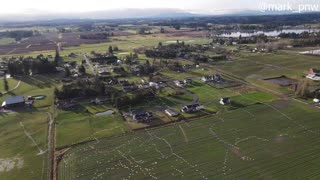 3:42
3:42
ViralHog
4 years ago $3.90 earnedDrone Captures Beautiful Flock Patterns of Flying Birds
24.1K1 -
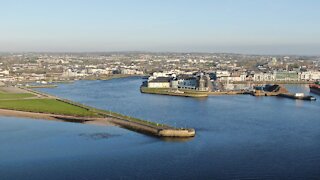 1:37
1:37
galwaycinematography
4 years agoDrone incredibly captures dolphins in Galway Bay, Ireland
2.93K -
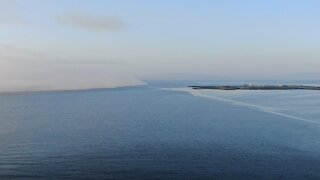 0:57
0:57
galwaycinematography
4 years agoDrone captures fog rolling in at Galway Bay in Ireland
1.83K10 -
 2:02
2:02
galwaycinematography
3 years agoSpectacular drone footage captures 13th-century Norman castle in Ireland
4.64K17 -
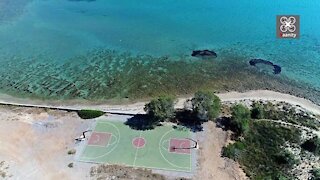 2:44
2:44
haanity
4 years agoDrone captures exotic Greek basketball court with stunning views
10.7K5 -
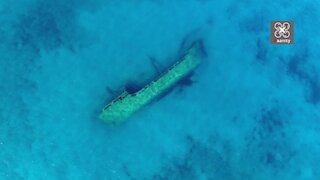 2:22
2:22
haanity
4 years agoGreek drone footage captures eerie Turkish shipwreck in exotic waters
10.1K1 -
 2:40
2:40
haanity
4 years agoDrone footage captures Greek beach with sandy dunes and clear water
4.51K -
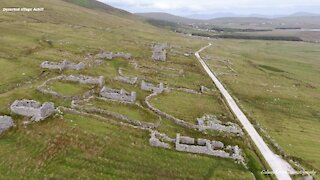 1:55
1:55
galwaycinematography
4 years agoDrone footage captures ancient deserted village in Ireland
11.7K4 -
 3:24
3:24
Dany4018
4 years agoJaw-dropping drone footage of beautiful Downtown Chicago
4167